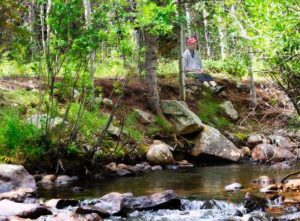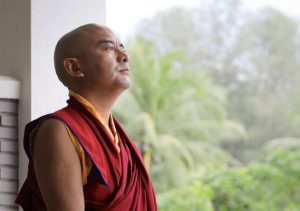
I have an elderly neighbor across the street from me. Her husband died several years ago, and she struggles to keep up with the yard work on her own. So I’ve slowly been taking on that responsibility.
It’s nothing major. I trim the hedges when they need it. I cut her grass on the days when I cut my own. And, every now and again, she asks me to help with something a bit more involved.
Recently, I cut down some trees and cleared out the brush around a small pond in her backyard. I’m sure the area was beautiful when it was first planted, but time and neglect had transformed it into a tangled mass of vines, tree branches, and bushes.
Even worse, the area was becoming so overgrown that it threatened to block access to the rest of the yard.
So I walked back there on a day when the weather was nice and got to work. It was slow going. Many of the bushes had thorns that threatened to cut my skin. And the trees sprouted from the ground at strange angles. I had to be careful that they wouldn’t fall on me when I cut them down.
The final challenge came from the earth itself. It’s been raining almost nonstop for about two weeks, so the ground was wet and muddy. My boots sank into the ground and the mud made a loud sucking sound each time I took a step.
I would love to say that I used a special homesteader technique to get the job done quickly. But the truth is that it was mostly mindless grunt work. I grabbed a plant, I hacked it into pieces with my saw, and then I carried the dismembered parts to the burn pile.
Wash, rinse, and repeat for the next two hours.
As time went on, my back and arms grew sore from the exertion. My hands were cut in places by thorns that had found their mark, and the hot sun sapped my strength.
But as I pushed through the pain and discomfort, I slowly started to make progress. I was able to move around the yard more freely. And I could see grass on the ground where previously only a tangled mass of overgrowth was visible.
In the end, I was able to successfully clear the area around the pond and create an unimpeded path for my neighbor to walk from one side of her yard to the other. Even better, I gained some nice-sized logs to use for my next bonfire.
Overall, I’d say the day was a success.
When I think about the Buddhist path, I realize that it’s similar to my experience with yardwork. The goal of Buddhism is to free our minds of greed, anger, and ignorance so that our enlightened nature can come forth in daily life.
This sounds simple enough. However, the first time we sit on the cushion, most of us aren’t happy with what we find growing in our minds. After years of neglect, they are often overgrown with the tangled vines of desire and dissatisfaction.
Needless to say, when we first see the state of things it can be discouraging. Worse yet, spiritual practice is hard work!
Our legs hurt when we practice meditation, we feel embarrassed when we mess up during chanting, and it can be difficult to fit our Buddhist training into daily life.
That said, if we are willing to fight through the pain and suffering, it is inevitable that we’ll make progress.
Eventually, someone will be rude to us, and we’ll feel less anger in response. Eventually, someone will need help and we’ll offer our services, instead of wondering, “What’s in it for me?”
As we see this progress, we’ll be encouraged to continue walking the path in the same way that a gardener is encouraged to continue clearing the brush when he starts to see bare ground where weeds and poisonous plants used to grow.
I would like to say that there is some cool Buddhist teacher technique that we can use to accelerate this process and accomplish this whole “enlightenment” thing in no time at all. But in my experience, it’s mainly just a lot of mindless grunt work.
It sucks, and we keep going. Our legs hurt, and we keep going. We don’t understand what we’re reading in a sutra, and we keep going.
And as along we’re willing to do that—as long as we’re willing to keep going, to keep removing defilements from our minds on the days when it’s hard and we’d literally rather be doing anything else—it’s inevitable that we’ll reach where we are trying to go.
We’ll arrive at a place where our mind is free from weeds and poisonous plants, and we can walk through life without suffering.
Namu Amida Butsu
Related features from BDG
Are You Happy?
Learning to Take Refuge
Being or Doing? Or Both? Or Neither?
How does it serve others?
Loving your Weeds: An Interview with Peggy Rowe Ward
Developing Consideration of Others












